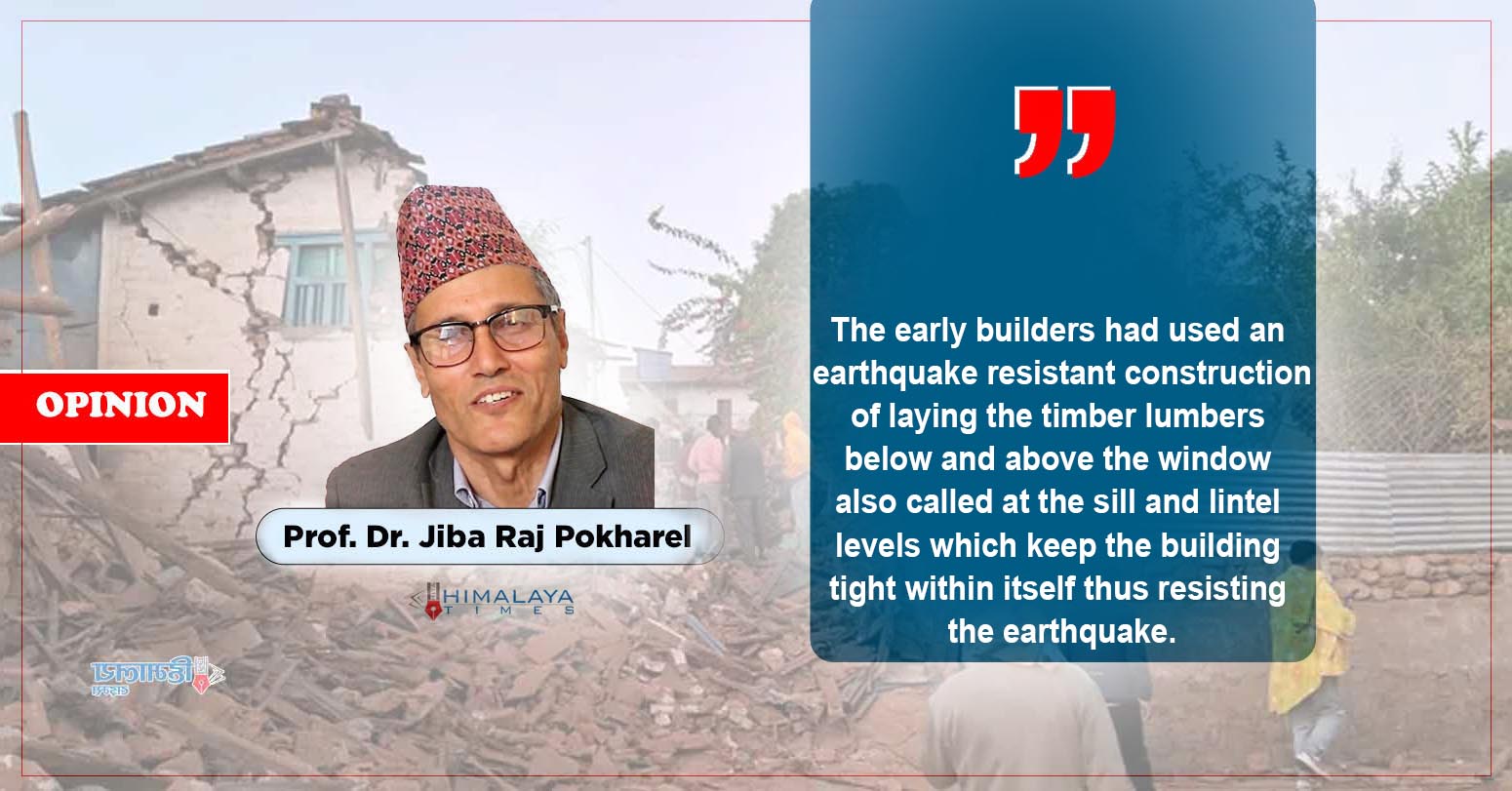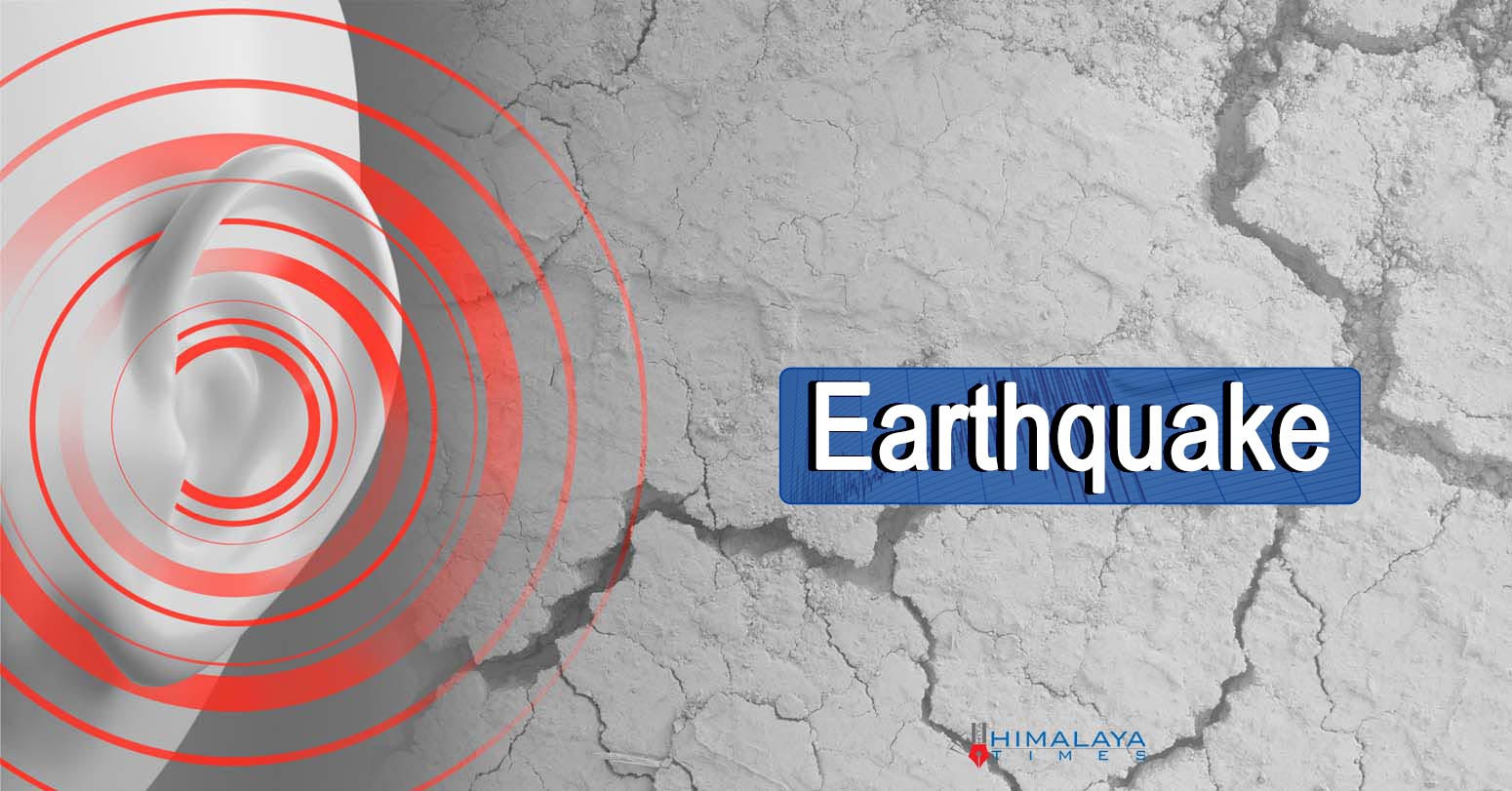
Two weeks have already passed after the occurrence of the earthquake of 6.4 moment magnitude on that unfateful Friday, the 3rd of November, this year with its epicenter on Rami Dada of Jajarkot district in which 157 people died at the spot and 324 persons were injured. Though the rescue operation was carried out in an incredible speed, thanks to the Nepal Army, Nepal Police and the Armed Police Force, the relief operations has been far from satisfactory. The survivors were compelled to pass the chilly winter nights on the open. The tents were made available, though belatedly but quite a few are still in search of it. The food items have been alleged to have been made available on the basis of partisan familiarity than necessity.
The earthquake damages the weak buildings completely as if like a tree uprooted by a powerful hurricane. It could be seen how the stone timber buildings were reduced to rubbles in no matter of time in Jajarkot and the surrounding districts like Rukum and Salyan. According to the report of Disaster Prevention Network, which is an umbrella organization of Government, Non-Government and Donor Agencies in Nepal, in Jajarkot alone, 9,794 homes were completely damaged, and 24,707 homes suffered partial damage. Similarly, in Rukum West, 16,570 homes were completely destroyed with 9,961 homes partially damaged. Furthermore, in Rukum East, 148 homes faced partial damage. In Salyan 151 homes were collapsed completely and 512 homes are partially damaged. In neighboring Rolpa 25 homes collapsed completely and 87 homes suffered partial damage. In addition to the above, Rolpa faced 25 complete damage and 87 partial damage, and in Pyuthan and Dang, 31 and 7 homes, respectively, suffered partial damage. All these added together boils down to the total damage of 26596 houses and partial damage of 35540 houses. Whether it be total or partial damage, some 62 thousand houses have become unlivable. As many temporary shelters are thus needed at the moment.
In the absence of warm shelters in shivering cold weather, five persons have already died. To die due to an earthquake is one thing but to die after surviving from such a killer earthquake just because of the lack of a warm shelter is very unfortunate indeed.
As it is said that hurry makes a bad curry, the construction of the temporary shelters done hastily may land in similar situation like the one that encountered in post 2015 earthquake.
The physical rehabilitation in a post-earthquake scenario passes from the locus of emergency shelter, temporary shelter and permanent buildings. The emergency shelters are characterized by the use of tents. It is now the time to construct temporary shelters. These have to provide a living space to the people until the permanent houses are constructed. It has been reported that efforts are underway to construct the temporary shelters and even permanent ones on the leadership of the Former Mayor Bishal Sharma of the municipality which deserves a roaring applause. It is hoped that it is done with caution and not with the customary haste. As it is said that hurry makes a bad curry, the construction of the temporary shelters done hastily may land in similar situation like the one that encountered in post 2015 earthquake. There is a need of learning from history rather than work in a haphazard manner.
In the aftermath of the 2015 earthquake basically two types of temporary shelters, rectangular and domed, were constructed. These sheltered 2 to 4 people. They contained Galvanized iron sheets in the walls and the roofs. One of them had bamboo wall. In a paper authored by Rita Thapa and Hikaru Imargawa and supervised by Professors Hom Bahadur Rijal and Masanuri Sukuwa entitled "Study on Winter indoor thermal environment of temporary shelters built in Nepal massive earthquake of 2015", it has been pointed out how the shelters made with galvanized iron sheets usually known as zinc sheets have been far from comfortable in the cold weather. Instead, shelters made of bamboo and mud have been shown to be more efficient due to their use in walls.
Their research has pointed out that the minimum outdoor temperature was 7.6 degree centigrade while the indoor temperature was a maximum of 10.3 in the research area, Lalitpur district. It is below the required comfortable temperature. It has happened because Zinc sheet has a thickness of only 0.26 mm while that of the bamboo with mud goes up to 13 mm by putting 8 and 5 of the thickness of bamboo mesh as well as mud. In the bamboo case, the roof was of zinc again as in the other cases.
The use of bamboo mesh plastered with mud on both sides and the roof covered with the plastic sheet will render the interior far comfortable contributing to sound sleep. In fact, in the Terai, houses are made of timber posts as the structural members that carry the load and the partitions made of bamboo mesh plastered by mud in both sides, inside as well outside. These houses are warm during the chilly winter and cool during sultry summer.
It can thus be seen how a temporary bamboo plastic shelter can be constructed in Rs 50,000, allocated by the Government
Instead of these shelters with very poor insulation, bamboo shelters could be used. Yes, bamboos are not available in Jajarkot in highland and midland. What are available are Thamnocalamus spp also locally known as Nigalo. But they can be brought from lowland or from Terai. After all, the Zinc sheets also have to brought from Terai or from India. A 24 feet diameter shelter consisting of a bedroom of 150 sq ft area, a toilet of 30 sq ft area, a kitchen of 90 square foot area and a living room of 285 sq ft area could be built with the money provided by the Government of Rs 50,000 using bamboo and plastic sheets as mentioned hereunder.
Such a design consumes 130 bamboos in total taking 20 feet length and 5inch diameter which has a surface area of 25 square feet when split. These are including 20 for structural bamboo posts, 50 for the partitions,50 for conical funnel like roof and 10 for furniture, doors and windows.
17 skilled and 19 unskilled persons are required for splitting the bamboos, making the wall and roof mesh, plastering both sides with the mud, erecting the structural bamboos, making the furniture, door and windows as well as making a firm floor. The cost of bamboo will be Rs 150 per stick if purchased in bulk which will then cost Rs 20000. Taking 800 Rs for a skilled and 600 Rs for a semi-skilled person, the labor cost will be 24000. The plastic for covering the roof will cost another Rs 5000. Unseen works could be done with the remaining Rs 1000. It can thus be seen how a temporary bamboo plastic shelter can be constructed in Rs 50,000, allocated by the Government.
Such round houses also reflect the identity of Nepal. Also called Gurung houses, such buildings can still be found in Gorkha and Lamjung districts. Nepal has faced earthquake since time immemorial but the records exist from the year 1223 according to which one large earthquake every 100 years and moderate one every 50 appear to be a regular phenomenon. But in the earlier earthquakes, it had retained its architectural identity. However, it was lost in the last earthquake of 2015 due to the use of modern materials like concrete and steel.
The Jajarkot earthquake is an opportunity to make use of the traditional housing forms and it should begin from the construction of the temporary shelters. It will then inspire the retention of identity during the construction of permanent houses thereby correcting the mistake made in the post-earthquake construction of the last seismic mishap.
The author is the former Vice-Chancellor of Nepal Academy of Science and Technology (NAST).















Middle-aged man spends millions to
Dr. Dharam Raj Upadhyay: Man
Children, Greatest Victims Of Sudan’s
Breathing The Unbreathable Air
Comprehensive Data Protection Law Critically
Gender Differences In Mental Healthcare